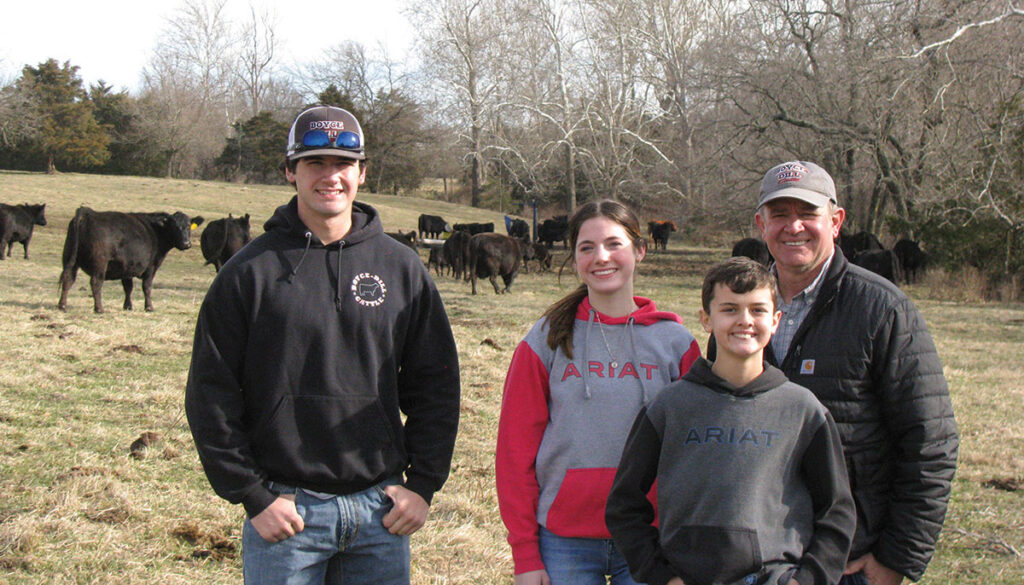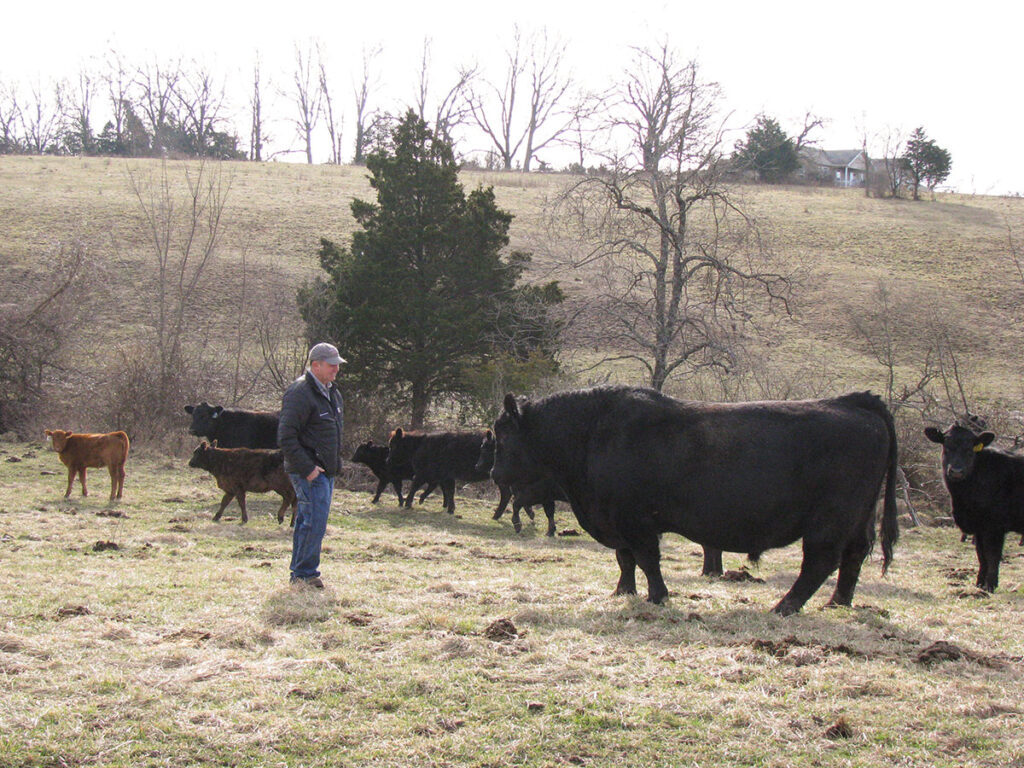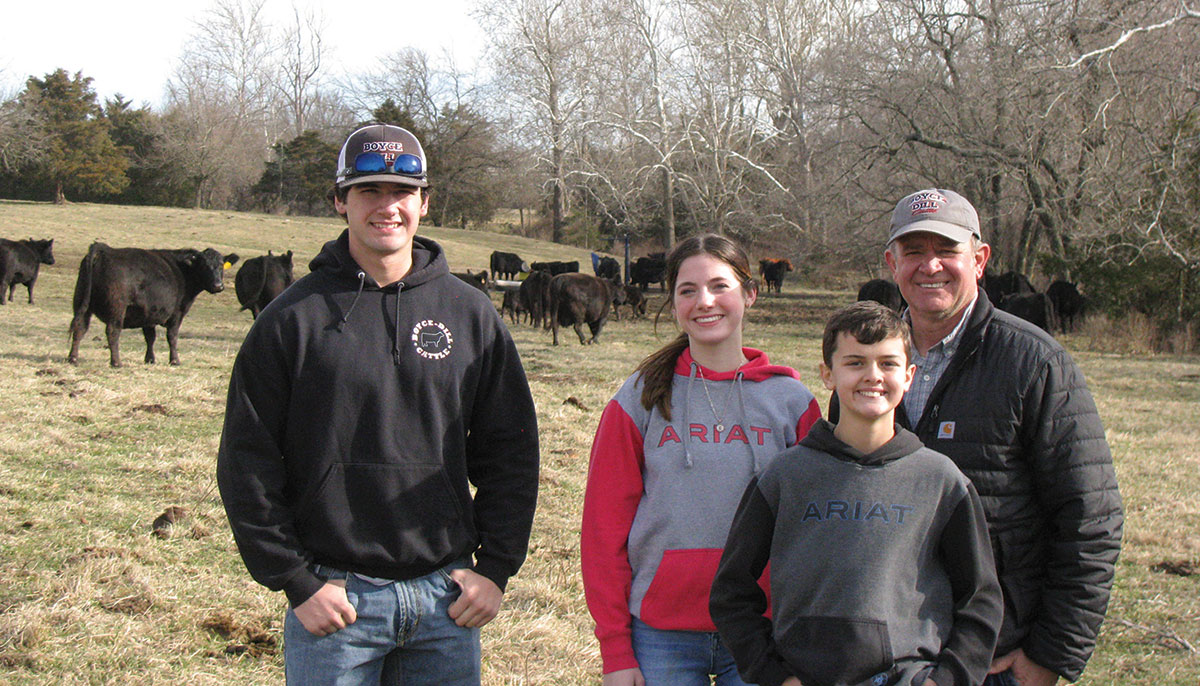
Boyce-Dill Cattle began with Limousin and added Angus
MARSHFIELD, MO. – Boyce-Dill Cattle is a family-run operation in Webster County, near Marshfield, Mo. Brent Boyce operates the farm. His sister, Lisa, and her husband, Jake Dill, and their family work together and show cattle.
Brent has 70 females. He said about a third of the herd is Limousin, a third is Angus, and a third is commercial, which is used for recips.
Brent’s involvement in the cattle industry began more than 40 years ago.
“I was 10 years old when I bought my first registered heifer. It was a Limousin heifer,” Brent said. He started showing cattle when he was 14.
“Most of our cattle are Lim-Flex, which is Angus/Limousin cross. It’s a registered breed, and [animals have] to be out of a registered Limousin and registered Angus to qualify as Lim-Flex,” Brent explained.
The venture into Lim-Flex began for Brent began before it was recognized as a breed.
“We bought an Angus bull and started using our Angus bull on some of our heavier, Limousin-influenced commercial cows. We really liked the results,” he said. “Then we would AI our full-blood cows and use an Angus bull for clean-up. At that time, we registered those cattle as half-bloods. So we had a head start before they made it its own breed.”
The registered side of Brent’s cattle operation may goes back to that first registered heifer, but he had a little prior experience with Limousin.
“We bought a commercial heifer from my uncle, and she out-performed everything. She was half Limousin and she out-performed the cattle we had. A couple of years later, we bought our first registered heifer,” Brent said, estimating that was back in 1982.
The addition of Angus to the cattle operation came several years later.
“Probably 20-plus years ago, we got our first Angus cow, so we raised registered Angus and registered Limousin,” Brent added.
A visit to Brent Boyce’s farm on a Monday might find his nephews, Jackson Dill and Brody Meadows, and niece, Ellie Dill. The younger generation spends time with their uncle and helps out on the farm. Jackson, 17, and Ellie, 14, are Jack and Lisa’s children. Eleven-year-old Brody is the son of Brent’s other sister, Julie.
Jackson is a senior in high school, and Brent said the teen helps with breeding decisions.
“It’s good to have him to bounce stuff off of,” Brent said. “We AI. We do embryo transplant. We do both conventional and IVF. We try to breed strengths to weaknesses on our cattle. We like moderate, easy-fleshing, efficient, low-input cattle that are good maternally. Cattle that milk, with good udder and teat placement; that’s what we focus on and we don’t chase one particular trait. We use EPDs as far as making breeding decisions,” Brent explained.
Brent likes for his cattle to calve in March and April, and then in September, October and November.

“I actually like the fall calving cows the best,” Brent said. “It just works out better for my schedule. It’s easier to get them bred back in December and January. You’re not fighting the heat.”
Brent’s cattle operation has changed over the last decade. Jackson said Brent is flushing cows and doing a lot more embryo transfers.
“In the last 10 years, we’ve raised more embryo calves than we did,” Brent agreed.
Jackson has also seen people changing what they want in their cattle.
“They want more body, volume as far as feed efficiency,” he said.
Brent stated when he was a kid, people wanted big-framed cattle, which has also changed.
“The big cattle always won,” he said. “Nowadays, the more moderate, big-bellied, easy-fleshing kind of cattle are preferred. It’s completely changed from the time I started.”
Ellie is the family’s showman.
“We go to [the Missouri Cattleman’s Association All-Breed Junior Show] in Sedalia, the Ozark Empire Fair and junior nationals. Last year, we went to Texas. We’ve been to Nebraska, Colorado, Louisiana and South Dakota,” Ellie said, adding that showing is not easy. “You have to be willing to put in the work. It’s going to take a lot of time, but it will be worth it,”
She also shows at the Missouri State Fair and the Tulsa State Fair. Ellie is the one who shows, but they all work together .
“We plan our vacations around it,’ Brent said.
Jackson, who has about 20 head of his own cattle, is looking at the show ring himself, just a little differently.
“I would like to be able to sell more show heifers to juniors and younger kids, or just sell more heifers in general; increase the volume,” Jackson said.
Boyce-Dill Cattle is a cow/calf operation and they also sell bulls and replacement heifers.
“A lot of our Angus bulls go to Gilbert Cattle Company. They purchase our bull calves at weaning. On our Limousin bulls, we do a cyber-Monday online sale where we market them and market some females,’ Brent said.







